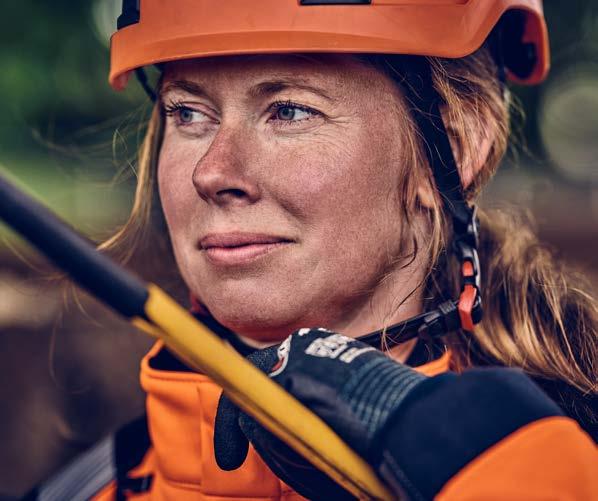
16 minute read
Sustainability at Tranemo
In recent years, Tranemo has made a major investment in the development of protective clothing for women, with focus on their needs and working conditions.
Empowering women
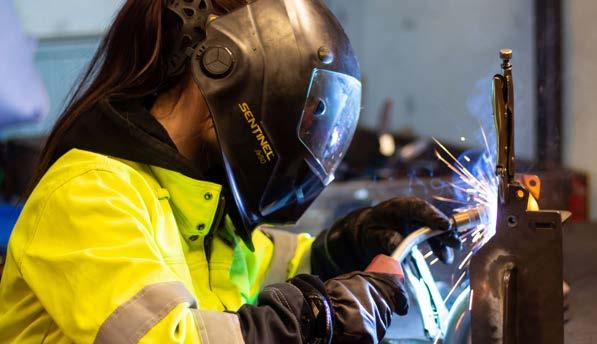
THE IMPORTANCE OF WELL-FITTED PROTECTIVE CLOTHING
Today’s ever changing workplace shows that more women are working in former male-dominated environments. In addition, many large companies are striving harder for a more equal workplace. We believe that everyone has the right to have comfortable, well-fitted protective clothing as well as the best levels of protection available – so they will always be protected if an accident occurs.
The primary purpose of protective clothing is to prevent an injury. Often comfort and ergonomic issues are reasons cited for inappropriate wearing of protective clothing, such as not wearing garments correctly or at all. The biggest demand from women who are required to wear protective workwear in the workplace is an appropriate fit. By meeting this demand we can ensure that our female users are supplied with the correct level of protection. In addition to this, we develop unique solutions to protect our female wearers, where a bra for breast implants is an example of our developments. Our maternity trousers are specially designed for expectant mothers and has been further developed into a unique solution where the customer can choose from all Tranemo’s trousers (without nail pockets).
Sanna Orava - a welder at Compia (Storuman, Sweden, has worked with welding for almost four years and mostly with MIG/MAG and MMA (pin welding) in thick steel. It requires good knowledge and skills, but also apropriate protective clothing that can perform under tough conditions.
Among the twelve welders at the company, only two are women, Sanna and a colleague of hers.
- Women may not want to enter the welding industry because it is a predominantly male industry. Hopefully the negative trend will not be persistent as the more girls apply for the welding profession.
Sanna knows from her own personal experience that optimal fit in workwear is not a top priority issue in some workplaces.
- In the past I have tried workwear that was aimed especially for men. The clothing was too heavy and large for me. Sometimes I even had to use non-flame retardant workwear to get the right fit.
Physically demanding work in high temperatures sets special demands on the flame retardant properties of the protective garment. Comfort and freedom of movement are other factors that contribute to how efficiently welders can perform their tasks.
- Most important is that protective garments do protect well against welding sparks and hot spatter. In addition to the flame retardant properties, the workwear must be durable, comfortable, stylish and well-fitting. Personally for me, the good fit is very important as I am quite small.
Sanna also emphasises that the protective clothing must provide high level of protection against potential risks in the workplace.
- There are always risks that welding sparks and spatter can stick to the garment, or that you get a hot metal drop on the shoes. Welding burns on the skin can also occur through contact with hot material.
Sanna Orava
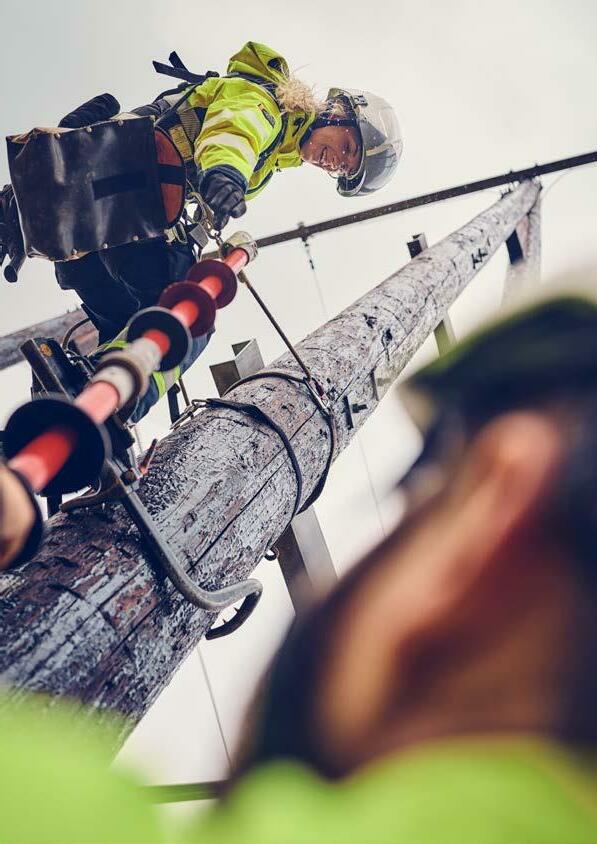
“We have always aimed to make protective clothing that has a longer lifetime and this attitude is deeply embedded in our DNA.” PRODUCTS THAT LAST ARE VITAL FOR THE CLIMATE
At Tranemo, we take environmental and climate impact into account at every stage of the product life cycle, right from the product development phase.
The latest research report1 from Research Institutes of Sweden (RISE) shows that the most effective way to reduce the environmental impact of clothing is to increase the useful life of garments. If we prolong the active lifetime of a garment by a factor of two, its carbon footprint is reduced by 49%. This also means less waste and less demand on resources.
Creating protective clothing, whilst also improving sustainability, is a demanding process. Tranemo’s goal is to ensure that users get the most environmentally friendly products that also provide the right level of protection.
By identifying the customer’s needs right from the start, Tranemo begins with a risk assessment to analyse the environment that protective clothing will be used in, the hazards it may be exposed to and other important variables. This risk assessment provides the foundation that Tranemo then uses to make well-judged decisions on protection level and sustainability factors.
Tranemo makes garments that are designed to have the longest possible life, through smart design, material selection and optimisation for industrial washing. But it is also important to know how to care for a garment and make sure that it is handled correctly. Tranemo has one of the most experienced and competent teams in the industry who are always ready to help customers make the most of every unique detail. This alone can make a significant contribution to sustainability.
Another important sustainability factor is that protective clothing from Tranemo is easy to repair. If needed, Tranemo can provide a suitable repair kit and instructions to enable a protective garment to be repaired correctly. This means that the customer gets a garment that lasts longer, has lower total cost of ownership and has minimal impact on the environment.
As well as taking proactive steps to maximise the life of its products, Tranemo strives to prevent and reduce environmental impact through other climate measures set out in its environmental strategy. Our environmental efforts include various projects that aim to reduce energy use and environmental impact during transport and to improve production processes so that we use less chemicals and natural resources.

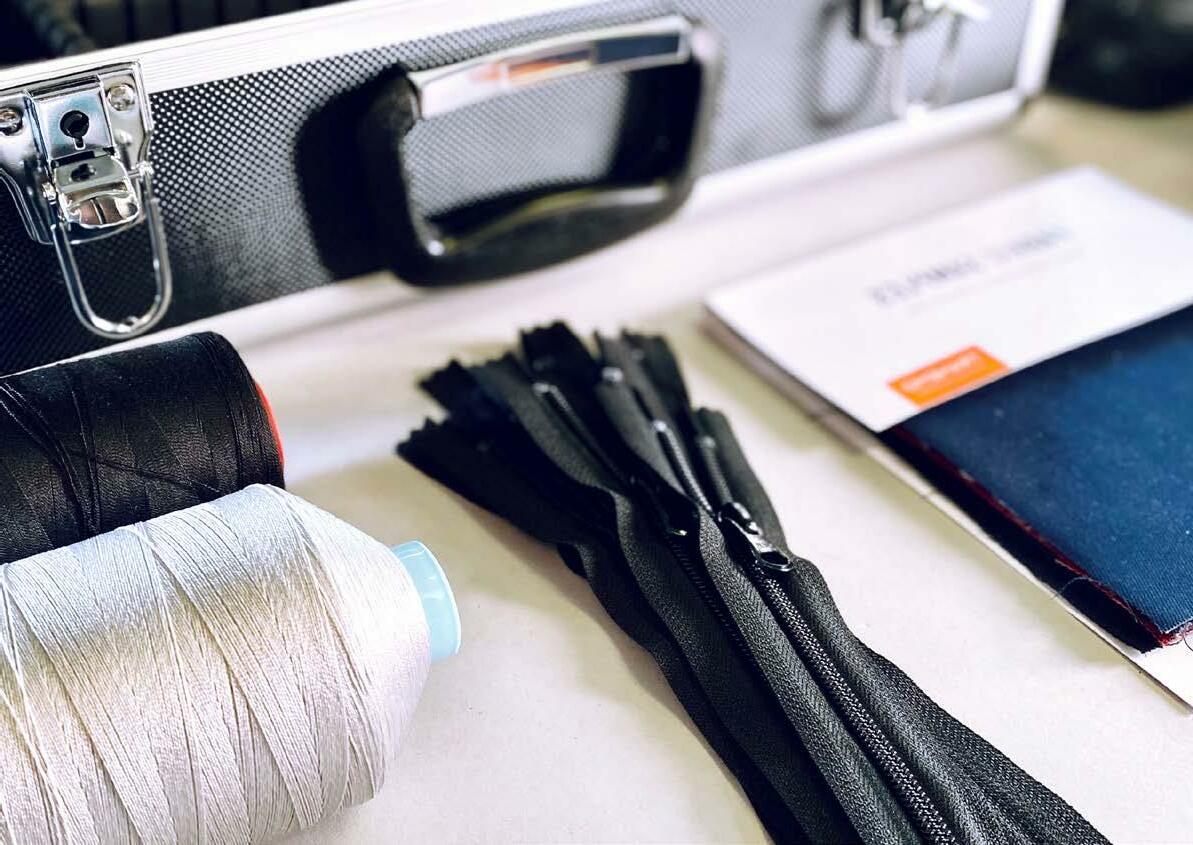
CARE & REPAIR
We construct garments that are easy to repair. By doing so, the customer gets a garment with a longer life, reduces the TCO and minimises their environmental footprint.
Since 1934, we have created our protective clothing to be as durable as possible. But over time, garments can be affected by high levels of work intensity - for instance a zipper may break or a button may come loose.
In 2022 we released our “Repair Kit”, which is a bag that contains the most common (FR) trims + fabrics. Each sales person have a Repair Kit and are now able to repair small problems like press buttons on the spot and can hand out repair parts directly to customers. We also offer our customers support and knowledge of how to fix Tranemo garments.
Use the QR-code to view video instructions on how to use our Repair Kit.
ON DEMAND
Our On Demand services help customers to create garments with special features. By giving this possibility, we ensure that the product has all the desired functionality a customer requires, together with a longer garment life span.
SUSTAINABLE PRODUCT DEVELOPMENT
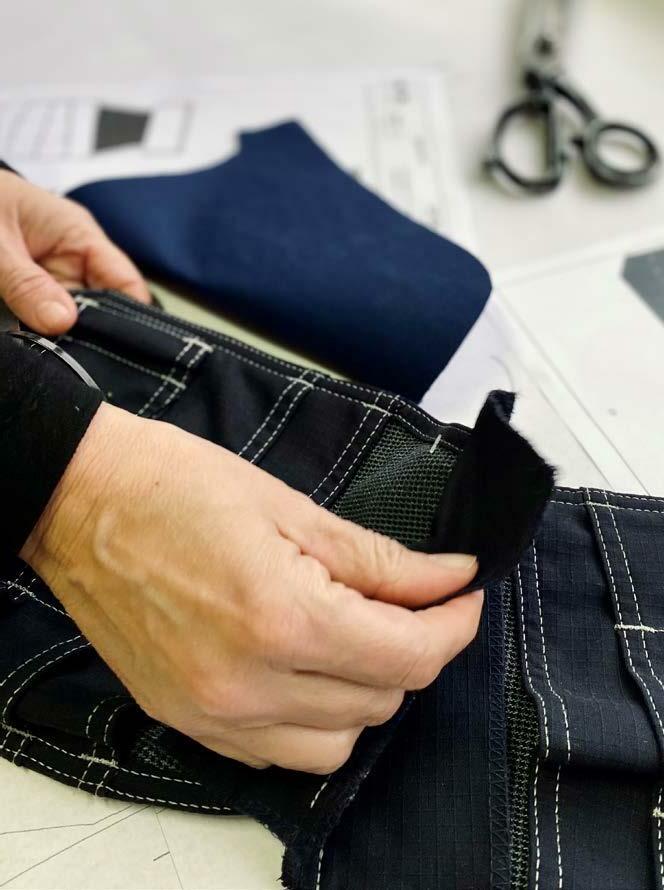
We consider environmental and climate impact at every stage in the product life cycle, right from the product development stage. Our aim is to minimise environmental and climate impact throughout the life of the product until a garment is worn out.
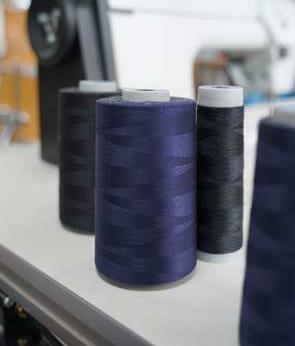
DEVELOPMENT FOR SUSTAINABILITY
Science, technology and product innovation are central to our plans to keep leading the development of advanced flame retardant solutions in a sustainable way.
At the same time, we are committed to our heritage and craftsmanship as we have been developing and manufacturing safety clothing since 1934. Today we combine innovation with our reliable knowledge and expertise. It helps us to bring greater value to our customers and to contribute to a positive climate effect. Every safety garment we produce is carefully designed, crafted and tested to ensure high quality and conformity to safety standards.
WITH FOCUS ON ENVIRONMENTAL IMPACT
Pro-actively reducing our environmental impact is a key component of Tranemo’s sustainability work. The first stage in our product development process is a deep analysis based on a risk assessment, environmental impact and life cycle perspective. By doing so we ensure environmental improvements throughout the entire value chain.
Design and construction of our garments are based on high utilisation and low fabric waste rate, good possibilities to repair and enhancing the longevity of the product life cycle.
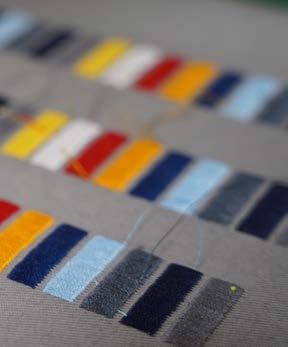
LESS CHEMICALS
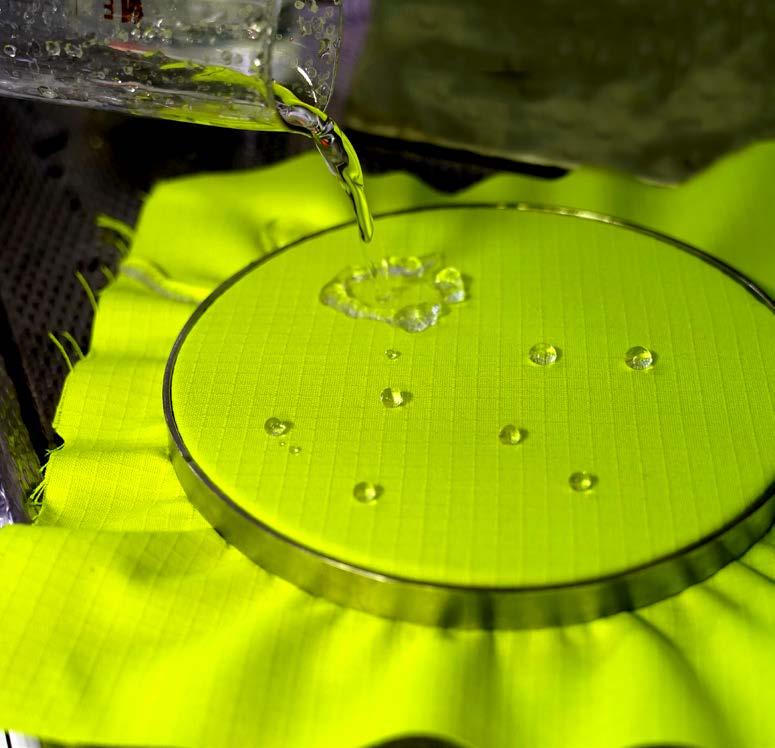
We aim to ensure that our garments do not include any harmful, prohibited or restricted chemicals. By signing Tranemo Acceptance Document, our suppliers are obliged to follow the requirements and restrictions accordingly.
Use of chemicals is sometimes necessary in our product development. Our main purpose is to protect our users from serious flame related injuries and to develop the best protective solution in a sustainable way. Therefore, chemicals must be handled carefully to ensure our products are safe for consumers and for the environment.
REACH
Tranemo products are made from fabrics and accessories that meet the requirements of REACH. REACH is an EU regulation on chemicals legislation and the abbreviation stands for: Registration, Evaluation, Authorisation and restriction of Chemicals. ECHA is the European Chemicals Agency and in Sweden the Swedish Chemicals Agency has primary responsibility for applying the REACH regulation.
OEKO-TEX®
OEKO-TEX® is an independent third-party certification process that ensures control of harmful or hazardous chemicals. In addition, most of the fabrics and accessories that TRANEMO uses are certified to class 2 of the OEKO-TEX® standard 1001. By using Standard 100 by OEKO-TEX® we increase the product safety and mitigate the risk of misusing harmful chemicals in our OEKOTEX® 100 certified garments.
RESTRICTED SUBSTANCES LIST (RSL)
To ensure that our products meet all the requirements of REACH, we use a Restricted Substances List (RSL) which all our suppliers must sign and comply with. The TRANEMO RSL is a list of all substances and the requirements and limit values under European legislation. In addition to REACH, Tranemo uses its RSL to comply with all current EU regulations, such as the Persistent Organic Pollutants Regulation (POPs) and the Biocides Regulation. The TRANEMO RSL also allows us to ensure that our suppliers comply with the Candidate List for substances of very high concern (SVHCs).
PFAS
Per- and polyfluoroalkyl substances (PFAS) are a diverse group of human-made chemicals used in a wide range of consumer and industrial products. PFAS are resistant to grease, oil, water and heat. Some PFAS have been more widely used and studied than others.
In 2021 Tranemo launched a new flame retardant collection Cantex WS with a PFAS-free treatment. Since then, our Flame retardant collections Outback Heavy Welding and Edge, our High Visibility collection Vision HV, and our standard Workwear have been updated and will in 2023 be completely PFAS-free as well. The aim is to gradually phase out the use of PFAS in all of the products. We also see the need for a strict chemicals legislation to minimise and eventually end the use of PFAS. In 2021 we have joined Chemsec’s Corporate PFAS Movement - ”No to PFAS” to influence the way chemicals legislations are implemented in practice.
THE SWEDISH CHEMICALS GROUP
Tranemo is a member of the Chemicals Group at RISE IVF, which means we can keep up to date with the latest developments in research and legislation. In collaboration with RISE, the Tranemo RSL is updated twice a year to ensure that we comply with restrictions and updated legislation as recommended by the Chemicals Group.
WE ARE MEMBERS OF:
n TEKO’s Environmental Group n The Swedish Chemicals Group n ”NO TO PFAS” movement
New chemicals added to our RSL:
N-(hydroxymethyl)acrylamide - 924-42-5 TRIS(2-METHOXYETHOXY)VINYLSILANE - 1067-53-4
Alkyl dithiophosphate - 255881-94-8
2,2’-Methylenebis(6-tert-butyl-4-methylphenol) - 119-47-1
The group 3-benzylidene camphor - 15087-24-8 is also extended in our RSL.
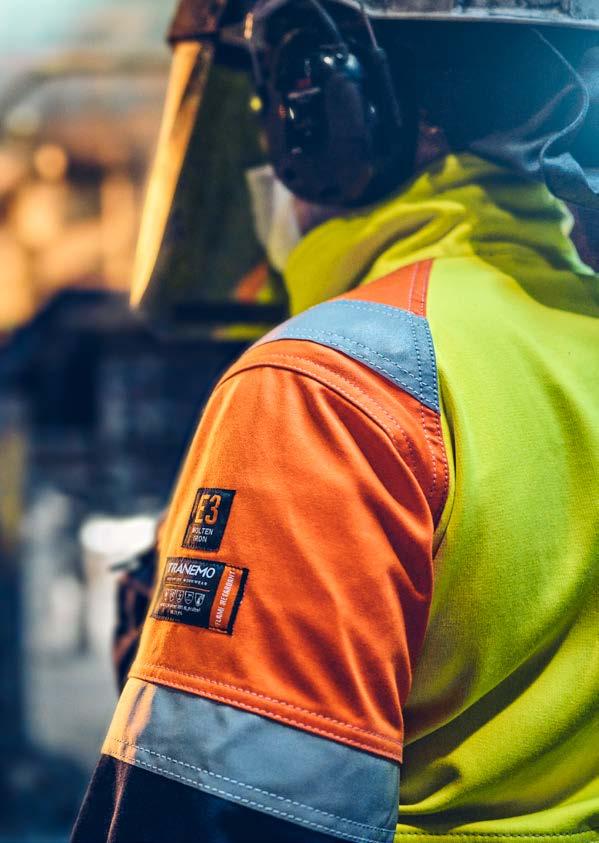
FIRST IN THE WORLD TO OFFER PFAS-FREE FLAME RETARDANT CLOTHING WITH CHEMICAL PROTECTION
In 2021 Tranemo launched Cantex Weld Stretch (WS), the world’s first inherently flame retardant collection that provides chemical protection to EN 13034 and is completely PFAS-free. The collection offers the highest level of protection against splashes of molten metal and exceeds the requirements for heavy welding according EN ISO 11611 class 2.
Since being founded in 1934, Tranemo has been managed with a clear focus on sustainability and creating protective clothing that is designed to last. The launch of Cantex WS with a fluorocarbon-free treatment is another important milestone in Tranemo’s commitment to innovative and sustainable product development.
“This is a step in the right direction and it opens up new opportunities for us. We have been actively working to find a fluorocarbon-free alternative that meets our high standards of safety and environmental performance for several years. Cantex WS is a result of that work and we are proud to announce it today,” says Max Larsson, CEO of Tranemo.
The innovative Cantex WS is a new generation of inherently flame retardant Cantex garments for the metal working industry. In Cantex WS, Tranemo has combined advanced material technology that is totally free from fluorocarbons, with properties that have become synonymous with Tranemo – outstanding safety features and long service life.
“This is more about evolution than revolution. With the new Cantex WS collection we have refined and enhanced many features that are important to users, whilst maximising environmental performance at the same time. Cantex WS brings us a step closer to our ambition to reduce the use of PFAS in our products,” says Max Larsson. Perfluoroalkyl substances (PFAS) have been used in the textile industry for a long time to protect textiles from moisture, grease and dirt. However, these substances break down extremely slowly and therefore have negative effects on the environment and health.
Tranemo sees great potential in the newly developed technology, which eliminates the need for treatment with fluorocarbons without affecting the overall level of protection of garments. This makes the collection a pioneering commitment to innovation and the first of its kind on the market.
“We have already completed all the necessary tests, with promising results. The next step is to monitor how the collection performs in real-life applications. This will provide us with valuable feedback for implementing the technology in our other products,” says Max Larsson.
“With the launch of Cantex WS we are taking our sustainability efforts to the next level. It feels inspiring to come up with innovative solutions that have less impact on the environment without compromising on the level of protection. Cantex WS takes us closer to our goal of gradually phasing out fluorocarbons from our products,” says Nieke Sarink, Sustainability Manager at Tranemo.
MATERIALS AND TECHNOLOGIES
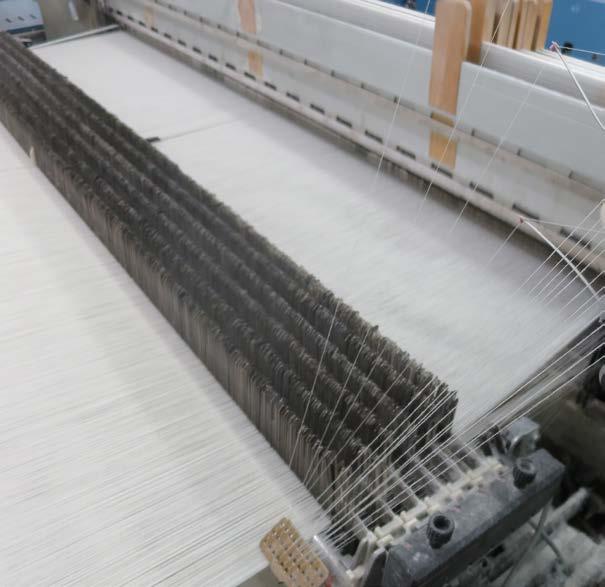
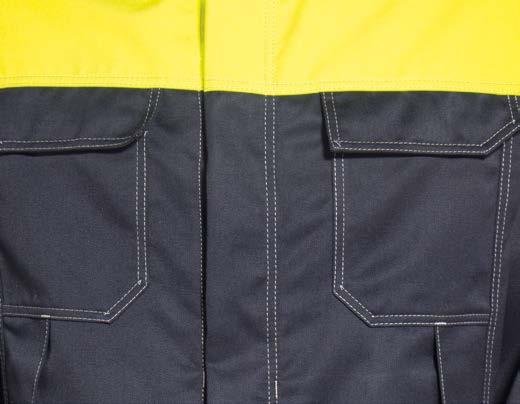
Our aim is to minimise environmental and climate impact throughout the life of the product until a garment is worn out and ready for recycling. Therefore, we focus on integration of more sustainable materials and technologies to reduce the climate impact.
CLIMATE SAVING SOLUTION DYEING
One of our main goals is to use better production technologies in order to reduce negative impact on environment.
We strive to apply solution dyeing for the products that are suitable for this dyeing technique. Traditional dyeing requires a two-step process. In the first step, fibres are produced without colouring. In the second step, colour is applied to the fibre.
With solution dyeing, one step is eliminated. It is based on a process of adding pigments to the spinning solution. The solution dyeing technology significantly reduces water use in the dyeing process and reduces energy use and subsequent greenhouse gas emissions.
Replacing synthetic piece dyed fabrics with solution dyed fabrics, can result in a reduction of 16% in total climate impact.1
Positive environmental effects of solution dyeing:
n Helps to reduce water consumption during production n Helps to reduce the chemical pollution of our planet n Helps to reduce CO2 emissions
Sold dope-dyed Tranemo fabrics
Meter (m)
Total increase
2019/20
9801 2021/22
15 140 + 54,5%
APEX COLLECTION - BASED ON SOLUTION DYEING
APEX was developed for work situations where it has been difficult to cope with chemical splashes without wearing a chemical suit. The material is a 300 g/m² solution dyed Aramide with a high degradation temperature.
With an attempt to reduce the negative contribution towards the environment, we are investigating ways to reuse the waste materials from our garment production and using recycled fibres in our garments.
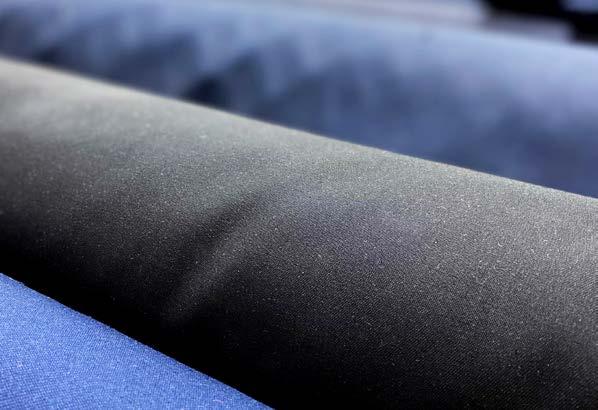
Recycling
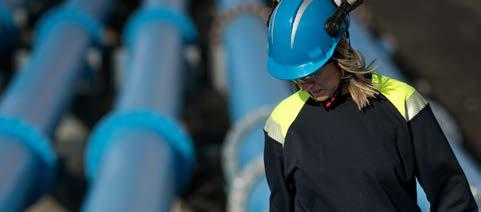
RECYCLING OF PRE-CONSUMER WASTE
By recycling the pre-consumer waste, including excess and waste that occurs during production, we can also create new possibilities for prolonging life-cycle of textiles.
Together with our main fabric supplier we have started a project with an effort to recycle the fabric production waste. The aim is to reduce the amount of virgin material used, but also the amount of the total waste generated from production. According to calculations, recycling of the weaving waste can save up to 29,400 kg of our production waste each year.
The recycling of pre-consumer waste is an advanced procedure that starts with the recycling fabric waste already created in the weaving stage. In this process, we collect the waste produced in our garment production and send the waste material to our supplier for recycling. The next step in the project is to develop fabrics that contain the optimal amount of recycled content without affecting the performance of the end product.
During 2021-22 we saved 7409 kg of pre-consumer waste from different suppliers. There are many factors to take into account when you assess the overall environmental impact of a garment. We see a good potential in using recycled fibres in our garments, as long as it doesn’t affect long-term product durability.
The latest research report1 from Research Institutes of Sweden (RISE) shows that the most effective way to reduce the environmental impact of clothing is to increase the useful life of garments. At Tranemo we are always aiming to produce protective clothing that has the longest possible life, through smart design, material selection and making garments that are optimised for industrial washing. We also focus on a variety of environmental measures to reduce climate impact. These measures include using recycled fibres in our garments.
RECYCLED COTTON
Recycling cotton fibre has significant benefits in tackling issues that are specific to cotton cultivation - such as the release of toxins into soil and water which lead to over-fertilisation and subsequent toxic effects on the environment. By using recycled cotton in our garments, we reduce the amount of new cotton that has to be grown. And by using cotton that is already in circulation, we reduce the strain on nature’s resources. A certain amount of new cotton is still needed to ensure that the fabric remains strong and its strength is not compromised. Tranemo therefore uses a mix of virgin and recycled cotton fibres.
RECYCLED POLYESTER
In 2021 we introduced recycled polyester in our quilted winter garments in our nonflame retardant garments. The quilt contains about 45% recycled fibres, depending on the construction. Recycled polyester is made from post-consumer PET, and is certified recycled.
Recycled fibres in Tranemo fabrics
Meter (m)
Total increase
2019/21
22 936 2020/21
27 490
+ 20%
2021/22
45 784 + 66,5%
20% RECYCLED COTTON
All of our inherent flame retardant T-shirts and sweatshirts are made of 20% recycled cotton.

